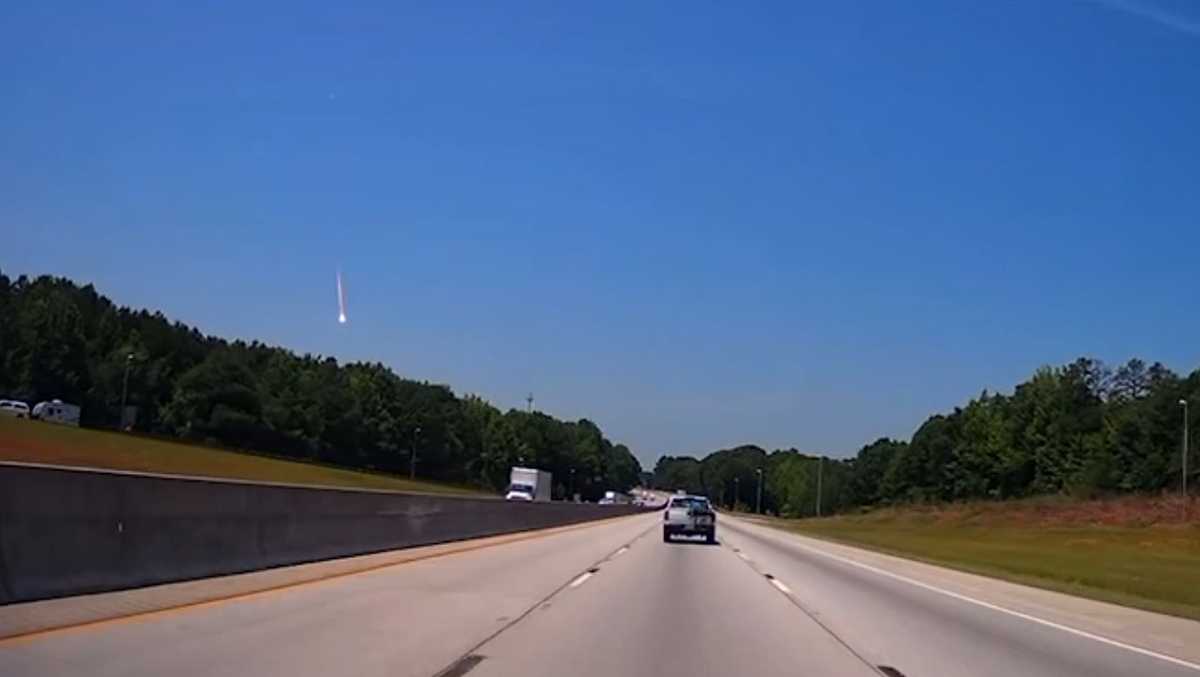
Could more meteors be on the way? Astrophysicist weighs in on timing and rare events
How did your country report this? Share your view in the comments.
Diverging Reports Breakdown
Could more meteors be on the way? Astrophysicist weighs in on timing and rare events
A meteor traveling at 30,000 mph hurtled toward a community in Georgia on Thursday afternoon. A meteor shower is currently passing through the atmosphere. The Bootids typically lasts from June 11 to July 2, with its peak occurring around June 21 to 22. This type of meteor is usually associated with the meteor shower, like it’s current one, but it’s not the same. The meteorite was about the size of a TENNIS ball. It landed in Blacksville, Georgia, and was seen by at least five other communities across the U.S. It was traveling at a rate of 30,00 mph. It is not known if the meteorite caused any damage to the ground or if it was just a random event on the way to the Bootids’ peak on June 21. The American Meteor Society is investigating the possibility of a meteorite shower on the same day as the meteor. It’s not known whether the meteor was the same one that was seen on June 11 or June 22.
Advertisement Could more meteors be on the way? Astrophysicist weighs in on timing and rare events Editorial Standards ⓘ
Questions remain after a meteor traveling at 30,000 mph hurtled toward a community in Georgia on Thursday afternoon.WYFF News 4 talked with astrophysicist David Moffett, who oversees Furman University’s planetarium and observatory, to see if the meteorite was just a random event or if more might be on the way.”I thought maybe this is associated with the meteor shower, like current one, but it’s not,” Moffett said. A minor meteor shower is currently passing through the atmosphere. June Bootids typically lasts from June 11 to July 2 with its peak occurring usually around June 21, according to the American Meteor Society.This type of meteor shower only produces strong activities on rare occasions and is typically observed with rates of one visible meteor a night. It is also best seen during the evening hours.”The thing is that time ranges when those meteors could occur,” Moffett said. “It could be associated with that meteor shower, or it could just be a completely random instance.”Bill Cooke, lead, NASA’s Meteoroid Environments Office at the agency’s Marshall Space Flight Center in Huntsville, Alabama later determined the fireball was not a Bootid or Taurid meteor based on speed and direction, so what could this be?Moffett said, “This could be a random object that’s floating around in the solar system for four billion years and just happens to be hitting Earth at just the right time, the right angle. So we see it in the daytime here.”He explained that seeing a meteor in the daytime sky is rare, “I was surprised, seeing fireballs in the daytime. You can see them, but like I say, it is a rare occurrence.” Moffett said normally in a meteor shower, the meteors themselves are like little grains of sand. At that size, you can see a brief streak in the night sky, but they are typically a lot higher, around 100,000 feet or less. The streak is from the particles burning up in the atmosphere.For a meteor to be seen across multiple states in broad daylight, the size would need to be much larger. NASA later revealed the meteor to be produced from an asteroidal fragment 3 feet in diameter, weighing over a ton. The meteor disintegrated about 27 miles above West Forest, Georgia, and landed near Blacksville. In February 2013, a much larger meteor than the one seen Thursday exploded over Chelyabinsk Oblast, Russia, which created a large shockwave. The meteor was produced by a 60 foot near Earth asteroid, and upon atmospheric impact, generated an explosive yield equivalent of 400-500 kilotons of TNT. The meteorite in Georgia only generated about 20 tons of TNT.
Source: https://www.wyff4.com/article/georgia-meteorite-meteor-space-fire-ball-flashing-light/65213422
